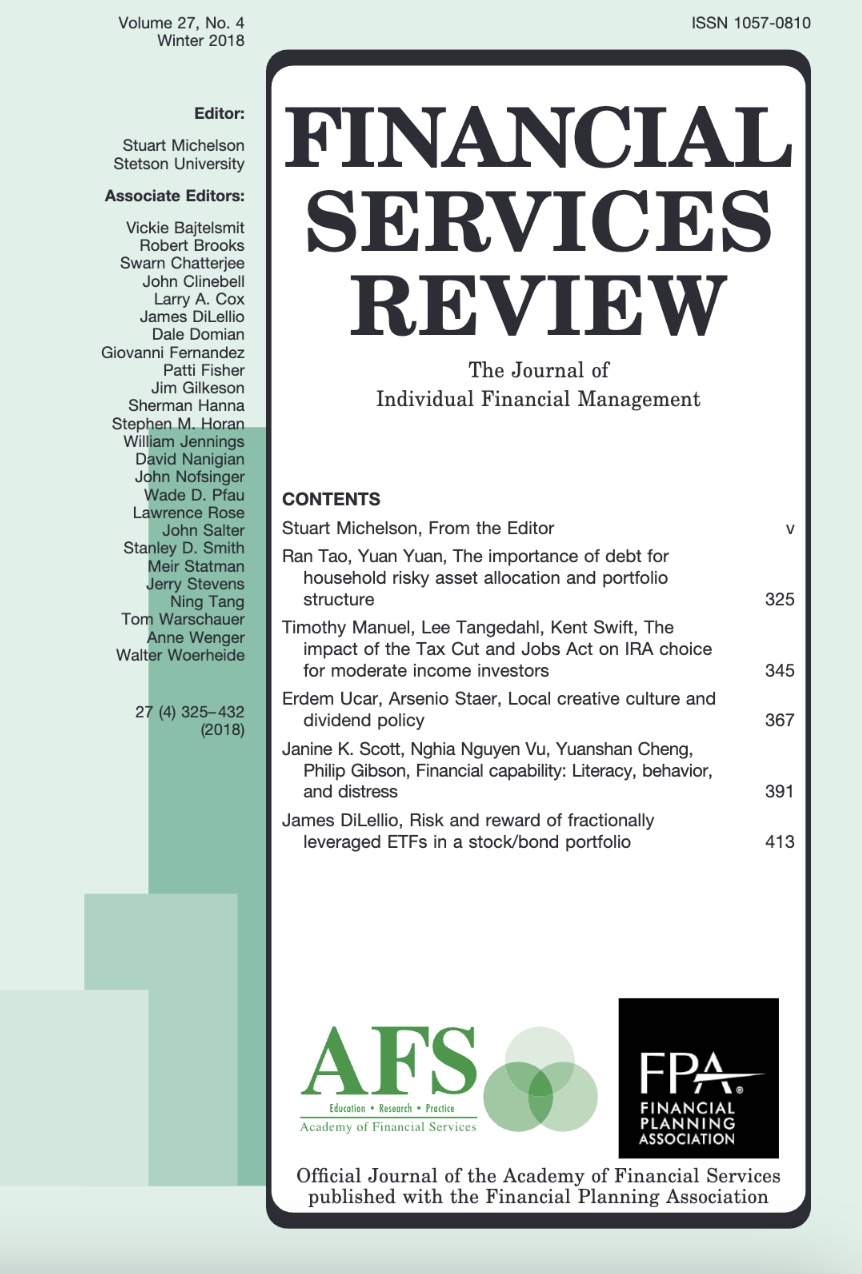The impact of the Tax Cut and Jobs Act on IRA choice for moderate income investors
DOI:
https://doi.org/10.61190/fsr.v27i4.3404Keywords:
Personal savings, Personal finance, Retirement account, Financial planningAbstract
While the choice of appropriate individual retirement account (IRA) type involves many factors, it is well known that differences in tax rates during the working and retirement years impact the optimal choice. Lower rates of return on investment may cause an investor to prefer a Traditional IRA whereas higher rates of return often result in higher after-tax future wealth for the Roth IRA. The lower statutory tax rates for individuals resulting from the 2018 Tax Cut and Jobs Act raises the breakeven rate of return where the Roth becomes preferable for many moderate income individuals who invest the amount of the deduction generated by the Traditional IRA. The new tax law significantly increases the breakeven rates for investors who begin investing at an older age. Moderate income investors are defined as those who will be in the 22% marginal tax bracket during their working years. Many investors do not invest the tax savings generated by a qualifying Traditional IRA. For these individuals a spreadsheet model is used to compare contribution and retirement real consumption. The Traditional IRA can be a better choice for many moderate income individuals who want to maximize their total lifetime real consumption rather than retirement consumption, and the compression in tax rates of the new tax law increases the number of outcomes where the Traditional IRA yields higher total consumption.
Downloads
Published
How to Cite
Issue
Section
License
Copyright (c) 2018 Academy of Financial Services

This work is licensed under a Creative Commons Attribution-NonCommercial 4.0 International License.
Author(s) retain copyright and grant the Journal right of first publication with the work simultaneously licensed under a Creative Commons Attribution-NonCommercial 4.0 International License that allows to share the work with an acknowledgment of the work's authorship and initial publication in this Journal.
This license allows the author to remix, tweak, and build upon the original work non-commercially. The new work(s) must be non-commercial and acknowledge the original work.


